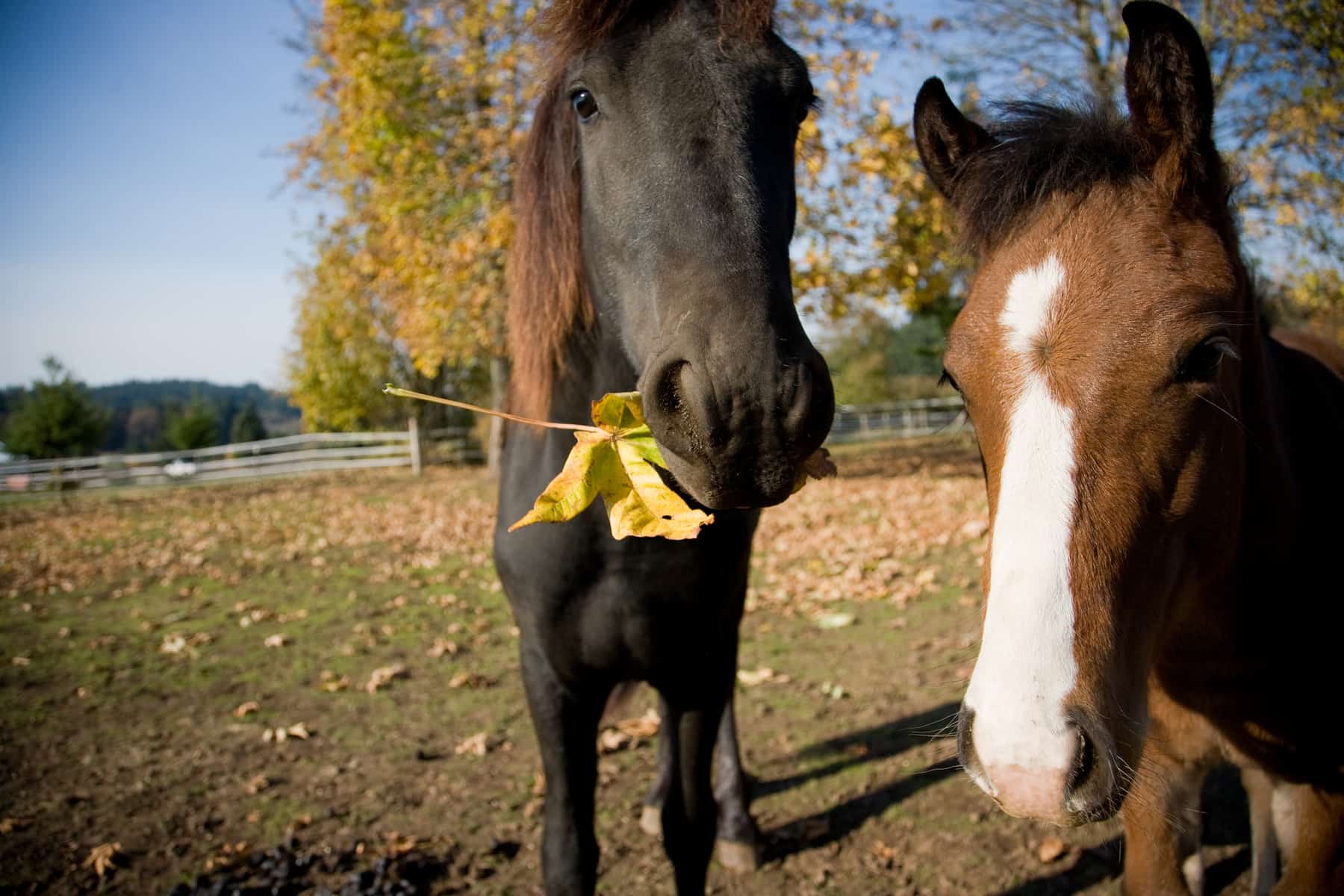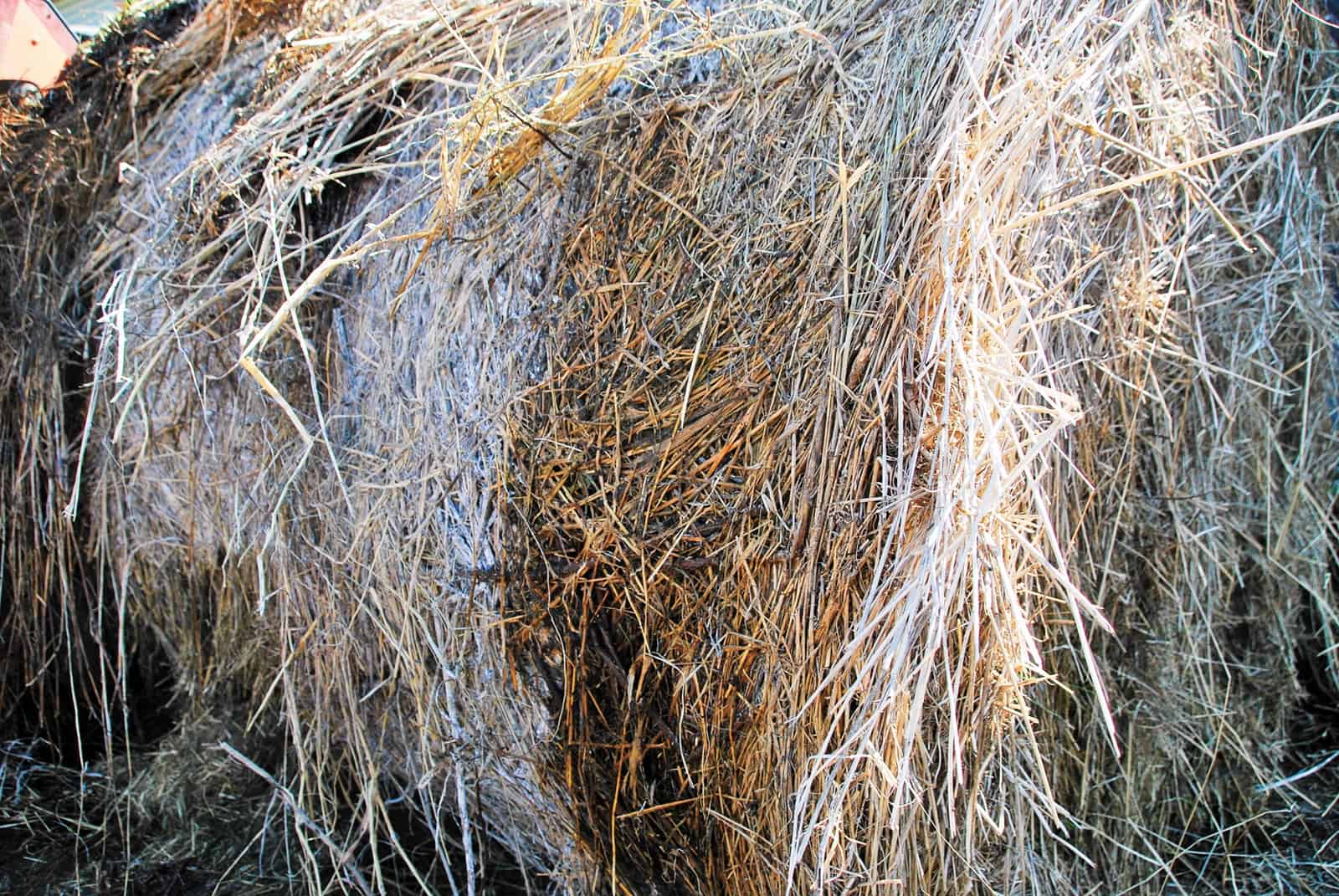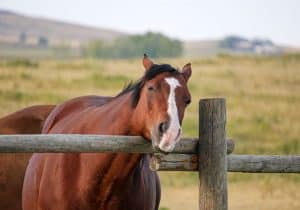10 Plants and Chemicals That Are Toxic to Horses

Review these substances your horse should never eat
There are many things horses should never eat. Certainly, toxic plants rank high on the list of things to avoid, but other substances, organisms, and chemicals can pose risks as well. While poisoning in horses is relatively rare compared to other causes of ill health, when it does occur the consequences can be dire.
“People often assume that horses know what to eat and what not to eat, but that’s just not true in a lot of cases,” says Cynthia Gaskill, DVM, PhD, Dipl. ABVP, associate professor and veterinary clinical toxicologist at the University of Kentucky Veterinary Diagnostic Laboratory. From a curious nibble of a tree branch to accidental consumption of a contaminated grain meal, there are a number of ways horses can ingest toxic substances that put their health—and lives—at risk. Here are our top 10:
1. Yew
American, English, Japanese, and Western yew are ornamental evergreen hedge-type plants that grow red berries in the fall. They are commonly used in landscaping across much of North America.
Danger to horses As little as a mouthful or two of yew can be lethal, says Sarah Ralston, VMD, PhD, professor in Rutgers University’s Department of Animal Sciences. The plant’s alkaloid toxin taxine causes cardiac and respiratory failure, often within minutes. “It’s not uncommon for horses to be found dead with the plant still in their mouth,” Ralston says.
Risk of exposure Most yew poisonings occur when clippings are erroneously tossed into a pasture after trimming, with leaves remaining toxic even after they wilt. Decorative wreaths made with yew are another potential source of exposure when hung where horses can access them.
2. Oleander
This common decorative perennial evergreen shrub produces white, pink, or red flowers in spring and summer. Common in the southern United States, oleander grows only in climates where temperatures remain above freezing.
Danger to horses Potent cardiac glycosides in the plant affect the heart’s ion balance, causing irregular heart activity that can ultimately result in cardiac failure and death. Relatively small quantities (0.005% of the horse’s body weight, or 0.05 pounds for a 1,000-pound horse) are considered lethal. Ingestion might also cause colic.
Risk of exposure Horses are often exposed to oleander when people toss clippings into pastures. Horses ridden on trails might also take a quick bite out of curiosity, notes Ralston.
3. Ionophores
These antibiotic feed additives, such as monensin, are used as growth promotors in cattle and poultry diets. Farmers also use these as antiprotozoal agents to control Coccidiainfections.
Danger to horses Horses are more sensitive than other livestock to ionophores, which influence ion transfer across cell membranes and, thus, affect how nerves and muscles function. “Ionophores are cardiotoxic to the horse—they damage the heart muscle,” says Karyn Bischoff, DVM, MS, Dipl. ABVT, senior research associate in Cornell University’s Department of Population Medicine and Diagnostic Sciences. Clinical signs of consumption can include a loss of appetite, rapid heart rate, sweating, colic, and unexpected death. “They may also have weakness in the legs, or you could see the horse thrashing if they are having difficulty getting up, because the skeletal muscles are affected as well,” she adds. “Unfortunately, a lot of these horses don’t make it. Where they do, long-term prognosis can be poor.”
Risk of exposure Horse feed can become contaminated with ionophores if manufacturers producing a variety of feed types don’t follow proper cleaning protocols between formulating batches for different species. “Exposure to cattle feed with the approved amount of ionophore is rarely a cause of intoxication in horses,” says Gaskill. “It’s when horses get into a concentrated pre-mix or an improperly formulated cattle feed with a higher dosage that we typically see the problem.”

4. Blister beetles
Abundant in the Midwestern United States, blister beetles swarm alfalfa fields and can be baled into alfalfa hay during harvest. Present from mid to late summer, they feed on the tops of alfalfa plants.
Danger to horses Blister beetles contain cantharidin, a toxic chemical and blistering agent. “When the horse eats it (he) can get blisters in the mouth and esophagus and ulcerations in the stomach and intestines,” says Bischoff. “It can circulate in the blood and can damage the cells of the heart. And on the way out it can damage the kidneys and cause ulceration in the urinary bladder. It basically burns the whole way through.” Clinical signs typically appear within hours of ingestion and include gastrointestinal distress, strained and frequent urination, and lesions in and around the mouth. If a horse ingests a lethal quantity (believed to be 0.5-1 mg of cantharidin per kilogram of body weight), he can die within 72 hours.
Risk of exposure Alfalfa hay can become contaminated with beetles that are crushed during the crimping process (when hay stems are broken to hasten drying). Even dried and crushed, the beetles remain toxic for a long time. Only a few flakes of hay in a bale might be affected because of the beetles’ tendancy to swarm. Unfortunately, short of carefully inspecting each flake, there is no effective way to assess for contamination, says Bischoff, who recommends buying hay from growers that take precautions when harvesting.
5. Rodenticides and pesticides
These are products formulated to kill rats and mice, gophers, birds, snails, slugs, ants, or other offending pests. They often consist of a pelleted, granular, or powdered bait.
Danger to horses In sufficient doses the toxic agents used in rodenticides and pesticides can be lethal to horses. Anticoagulant rodenticides, for example, a common class of rat poison, are designed to cause bleeding and hemorrhaging in the targeted pest but ultimately can cause the same in larger species. “These things are dose-dependent, but sometimes it doesn’t take very much, especially with inquisitive (foals) that will put just about anything in their mouths,” says Gaskill.
Risk of exposure Bait-type products often contain sweet flavorings or grain bases designed to attract pests. Unfortunately, says Gaskill, these qualities often make them attractive to horses as well. Exposure typically occurs due to inappropriate storage or because those setting the bait do not follow label directions.
6. Herbicides
Some property owners apply herbicides to their fields to control weeds. Glyphosate and phenoxy herbicides are most commonly used.
Danger to horses Horses might be inclined to consume toxic plants they normally wouldn’t eat after they have been sprayed with herbicide, says Safdar Khan, DVM, MS, PhD, Dipl. ABVT, who previously served as director of toxicology at the ASPCA Animal Poison Control Center. “When herbicides are used it can bring certain chemical changes in the plant, which for some reason can make it more attractive to the horse.” Diarrhea and colic are typically seen post-exposure.
Risk of exposure The most common means of exposure is when an owner has used an herbicide in a horse’s field and forgotten about it, says Khan. Thus, following product guidelines is key. “For grazing animals there is usually a withdrawal time in the directions (designating how long to keep the animal off pasture following application),” he says.

7. Decaying organic matter
Rotting hay, haylage, or other organic matter has the potential to harbor botulism-causing toxins produced by Clostridium botulinum.
Danger to horses Horses are highly susceptible to C. botulinum toxins, which attack the nerves that communicate with muscles, leading to general weakness that progresses to paralysis. Clinical signs of botulism might include inability to eat, drooling, nasal discharge, muscle tremors, difficulty getting up, difficulty breathing, and death.
Risk of exposure Toxin ingestion is one of the most common routes of exposure in horses, notes Gaskill, though it can also be acquired through exposed wounds. Some parts of the country, such as Kentucky, have high levels of the toxin-producing bacterial spores in the soil. “Rotting, decomposing hay or improperly put up haylage or silage are common sources of contaminated material,” says Gaskill. Animal carcasses can also harbor the toxin.
8. Fumonisin (moldy corn)
This mycotoxin (fungal toxin) can infect corn prior to harvest or during storage. Hot, dry conditions followed by high humidity are associated with increased fumonisin concentrations in growing corn, usually in the Midwest and South.
Danger to horses Horses that eat corn containing toxic fumonisin levels develop moldy corn poisoning, or equine leukoencephalomalacia (ELEM), a rapidly progressing, often fatal neurologic disease. “It basically melts the white matter of the horse’s brain,” explains Bischoff. Clinical signs might include those typical of neurologic disease, such as head-pressing, circling, muscle tremors, weakness, or strange, sometimes violent behavior. For those that survive, the prognosis is not good, says Bischoff. Veterinarians typically recommend euthanasia.
Risk of exposure Most commercial feed mills test for fumonisin contamination. But feeding untested corn, such as that which has come directly from the field, can put horses at risk, particularly in regions where fumonisin is more prevalent.
9. Red maple
Researchers have known that wilted red maple leaves can be toxic to horses, but they now suggest that other species, such as sugar and silver maple, might be problematic as well.
Danger to horses While research on the mechanism behind red maple poisoning is ongoing, scientists believe the toxic agent is linked to levels of gallic acid, which increase in leaves throughout the summer. The leaves in combination with certain bacteria produce a strong oxidant that damages horses’ red blood cells, hindering their ability to carry oxygen or destroying them completely. “A lot of horses die from it, but some survive with intensive care,” says Bischoff. Clinical signs include loss of appetite, red urine, increased drinking and urination, and a generally depressed state. To be affected, an average-sized horse would need to consume an estimated 1.5-3.3 pounds of wilted leaves.
Risk of exposure “Red maple poisoning hellip; happens mostly in the late summer and early fall,” says Bischoff. Fallen branches in a paddock following a storm are the most common source of exposure, with wilted leaves remaining toxic for as long as 30 days. Bored or curious, a horse might strip the leaves off and eat them. Scientists believe the bark is also toxic.
10. Tansy ragwort
A nondistinct yellow flowering plant, tansy ragwort grows throughout most of North America.
Danger to horses “If a horse eats enough of the plant over a short period of time, or smaller amounts over a longer period of time, they can develop an irreversible chronic liver disease, though they may not show signs for six months to a year,” says Bischoff. Signs can be neurologic and include head-pressing, circling, and bizarre behavior. Loss of appetite and weight loss over time are also common.
Risk of exposure Horses might consume the plant if it gets baled into hay, but because disease onset is slow and clinical signs often do not appear until well after the initial exposure, poisoning can be difficult to trace, says Bischoff.
Take-Home Message
There are a number of substances that are toxic to horses, with adverse effects ranging from mild to fatal, depending on what is consumed, how much, the horse’s size and health, and other case circumstances. Because horses don’t always know what’s harmful for them, owners and caretakers must be keenly aware of these threats when managing their horses.
Written by:
Lindsay Day, REMT
Related Articles
Stay on top of the most recent Horse Health news with















